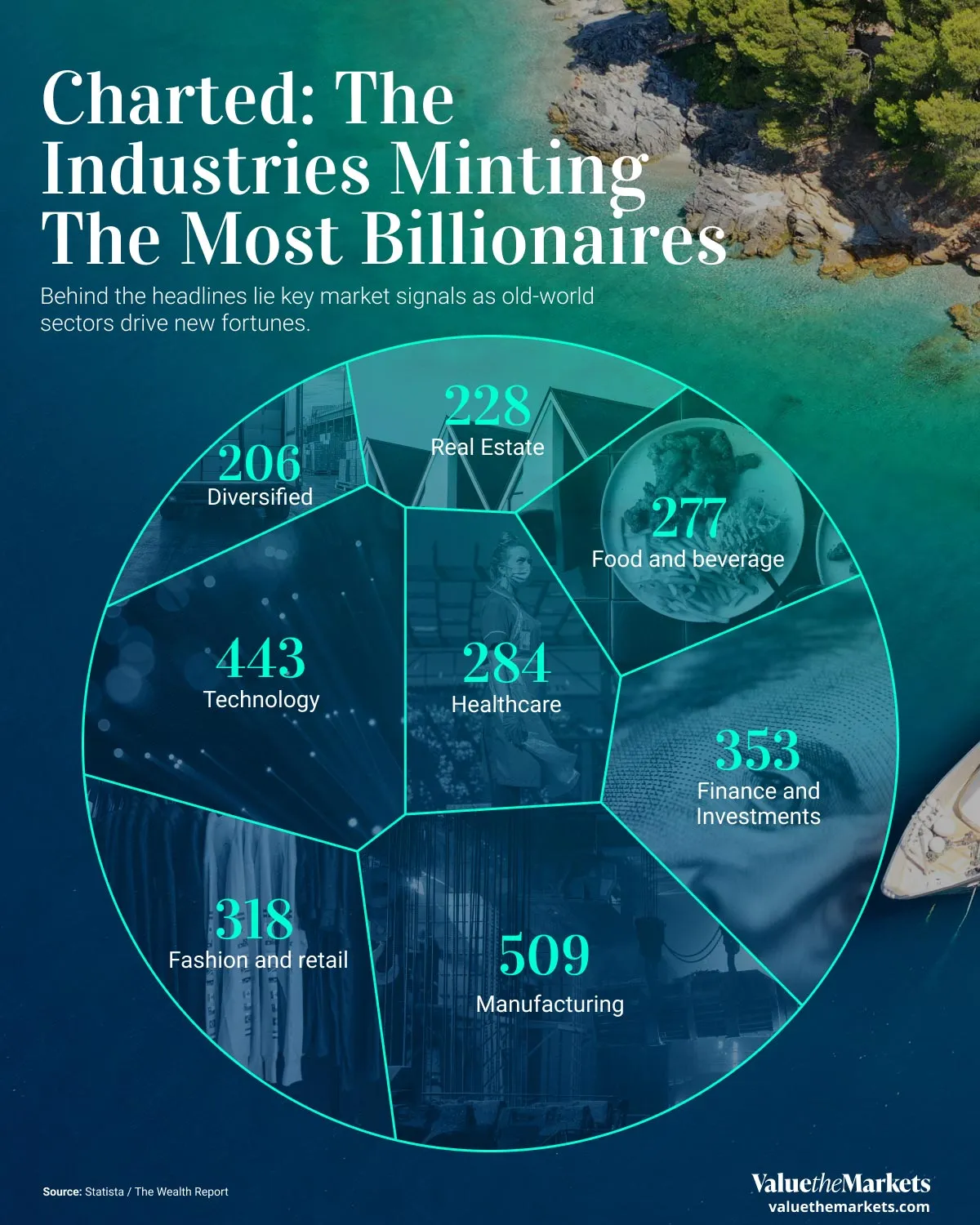
In 2024, the United States was home to 30% of the world’s billionaires and 40% of total billionaire wealth, according to The Wealth Report 2025 by Knight Frank. Finance and investments produced the highest number of billionaires, while tech accounted for the most wealth at $2.6 trillion. But this is starting to shift. Since 2014, manufacturing has created 509 billionaires1—more than any other sector—with 50% based in China. Tech followed with 443, also led by China, though its pace of new billionaire creation is slowing. This may signal a maturing sector where future opportunities lie less in early-stage growth and more in infrastructure, consolidation, and value-driven plays.
The typical billionaire remains older and male. In 2024, the average billionaire's age was 65.7 years old, and 87% were men. But that too is changing. Among new billionaires, 82% were male, and nearly 47% of those under 30 were female. A younger, more globally diverse, and increasingly female group is emerging, with wealth expected to spread more evenly around the world as new generations take over.
#What Are The Implications For Investors?
As the profile of today’s billionaires changes, it reflects structural shifts in global growth drivers. While finance and tech still dominate in wealth creation, manufacturing has quietly taken the lead in producing new billionaires, especially in China. This suggests that investors should broaden their focus beyond digital and financial assets to include advanced manufacturing, automation, and industrial innovation. The resurgence of manufacturing also signals opportunities in energy infrastructure, supply chain technology, and reshoring efforts driven by geopolitical tensions.
The younger, more diverse profile of billionaires opens the door to new consumption patterns, philanthropic priorities, and investment behaviors. A rising share of women and under-30 billionaires suggests growing influence from sectors aligned with digital entrepreneurship, impact investing, and ESG-driven ventures. Many of these younger billionaires are emerging from startup ecosystems, pointing to the increasing importance of private markets in global wealth creation. Exposure to late-stage venture capital or private equity may become more relevant as capital pools shift upstream from public markets.
Investors who recognize these generational, sectoral, and structural shifts—and position accordingly—stand to benefit as a new wave of global wealth takes shape.
| Industry | Number of New Billionaires (2014-2024) |
| Manufacturing | 509 |
| Technology | 443 |
| Finance & Investments | 353 |
| Fashion & Retail | 318 |
| Healthcare | 284 |
| Food & Beverage | 277 |
| Real Estate | 228 |
| Diversified | 206 |
#What Are The Implications For The Planet?
The rise of manufacturing billionaires, especially in China, raises concerns about emissions and resource use - but it also presents a turning point. Many of these new wealth holders have the capital and business incentive to invest in cleaner technologies - particularly in regions where regulation and consumer demand still reward sustainable practices.
Generational and demographic shifts among billionaires may also accelerate investment in climate solutions and socially responsible business models, especially outside North America. Younger wealth holders are more likely to support ventures tied to environmental goals, and that mindset is shaping how global capital is being deployed.
In North America, however, the policy environment has shifted. With the current U.S. administration rolling back federal support for clean energy, ESG initiatives face political headwinds. This makes it less likely that decarbonization and sustainability will drive near-term market opportunities through public-sector incentives. That said, global pressure, corporate commitments, and capital from private and institutional investors may continue to support growth in areas like renewable energy, battery tech, and green supply chains -though this growth may occur in spite of, rather than because of, U.S. policy.
For investors, this means tracking global capital flows and private-sector innovation remains essential, especially as the gap between public policy and long-term sustainability trends widens.